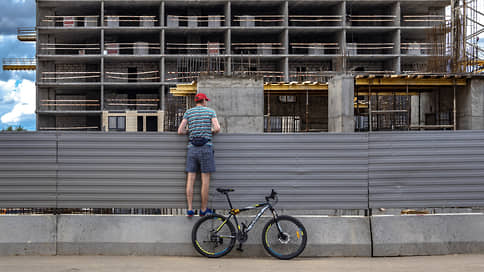Preferential mortgage plans were cut – Newspaper Kommersant No. 220 (7421) of 11/28/2022
[ad_1]

Sanctions and mobilization forced the Ministry of Finance to reduce the target of the Preferential Mortgage program for the purchase of housing in new buildings – the expected number of citizens who took such loans in 2020-2022 is proposed to be reduced from 960 thousand to 933 thousand. At the same time, to stimulate demand, it is proposed to expand this program (in case it is extended beyond 2022), as well as family, Far Eastern and IT mortgages – through transactions for the purchase of housing from closed-end investment funds. While this method of acquiring apartments through collective investment is not particularly popular, the amendments may stimulate its use.
Difficulties in the mortgage market and general instability in the economy affected the authorities’ forecast for the volume of soft loans issued to citizens at 7% per annum for the purchase of housing in new buildings. As follows from the draft government decree published by the Ministry of Finance, it is proposed to reduce the expected number of citizens who have taken such loans in 2020–2022 from 960,000 to 933,000 people. The total amount of concessional loans does not change at the same time – 3.6 trillion rubles, which means an increase in the “average check” for such loans. As the department notes, the decrease in the expected number of citizens who improved their living conditions is due to “reasons of an economic and political nature” – the consequences of sanctions against Russia, as well as “making decisions on partial mobilization.”
Recall that the issuance of soft loans for new buildings collapsed this spring after a sharp increase in the key rate of the Central Bank associated with the start of the military operation. The rate on such a mortgage then rose to 9%, after its return to the level of 7%, the demand for the program gradually recovered, while lagging behind last year’s pace. According to DOM.RF, as of November 10, 898.4 thousand loans were issued for 2.97 trillion rubles, including 212.7 thousand loans for 900.6 billion rubles since the beginning of 2022. The program is designed until the end of 2022, and the question of its further fate remains open – the Ministry of Construction had previously advocated an extension, the Ministry of Finance reported that it was based on its completion on December 31.
The indicators of the more stable in terms of the dynamics of the issuance of preferential programs – the perpetual “Rural Mortgage” at 3% and the “Far Eastern Mortgage” at 2%, calculated until 2025, do not change.
Wanting to stimulate such programs as “Family Mortgage”, “Far Eastern Mortgage”, “Preferential Mortgage” (if it is extended), “IT Mortgage”, the Ministry of Finance proposes to expand their use through transactions for the purchase of housing from closed mutual investment funds ( ZPIF). The agency expects that this will increase the volume of housing commissioning by expanding the composition of its developers and sellers participating in preferential mortgage programs. It should be noted that developers have been creating funds for the implementation of their projects to attract collective investments for a long time, but so far the mechanism for buying housing from close-end investment funds is not widespread.
According to Igor Talalov, head of the investment analysis group at Accent Capital, the project is aimed rather at increasing the attractiveness of collective investments. According to Kirill Golyshev, Regional Director of the Department of Residential Real Estate and Land Development at Nikoliers, with a regular purchase of a home, you have to pay the full cost of the apartment, while “entrance” to the shares of a closed-end mutual fund, as a rule, costs much less. “The investor acquires a share in the ownership of the property that makes up the project, and after the sale of the apartments, the profit is distributed among the investors,” he says.
According to Igor Talalov, “ZPIF, as a rule, having bought an apartment under an equity agreement, waits for the completion of construction and sells housing (VAT must be paid in case of an earlier sale), and if preferential programs are extended to such transactions, the fund will have equal conditions with the developer after the facility is put into operation. That is, the buyer will purchase an apartment already in the secondary market, since a contract of sale will be concluded between the closed-end investment fund and the citizen. Innovation is also important for developers. As Igor Talalov explains, the pent-up demand for housing will be realized after construction is completed – and it will be financed (transfer funds to escrow accounts, the filling of which depends on the cost of project financing) not by citizens, but by closed-end mutual funds.
[ad_2]
Source link






